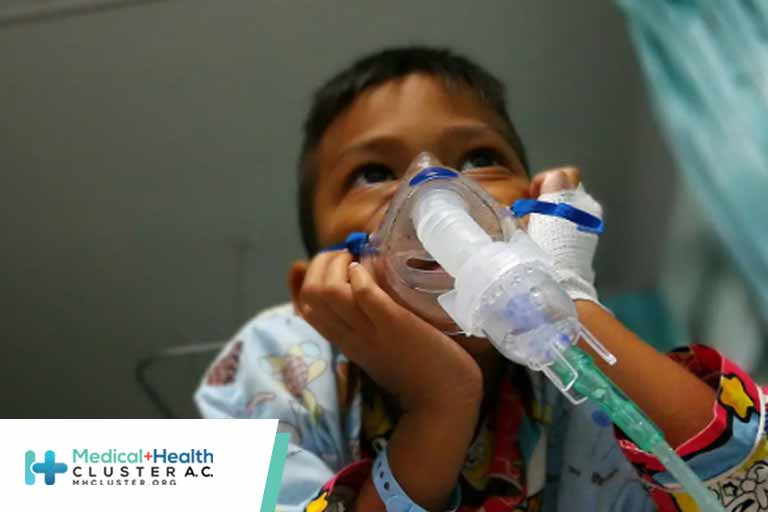En atención a la creciente preocupación sobre la confianza en...
Leer más
CDC: Omicron Hospitalization Doubled in Unvaxxed Children

Unvaccinated children ages 5 to 11 were more than twice as likely to be hospitalized for COVID-19 during the Omicron wave, and nearly a third of hospitalized kids overall had no underlying medical conditions while about a fifth required intensive care unit (ICU) admission, researchers found.
From Dec. 19, 2021 to Feb. 28, 2022, a total of 19.1 per 100,000 unvaccinated children this age were hospitalized for COVID-19 versus 9.2 per 100,000 vaccinated kids, reported Dallas Shi, MD, PhD, MBA, of the CDC in Atlanta, and colleagues.
Of the 397 children hospitalized with COVID during this period, 30% had no preexisting conditions, 19% were admitted to an ICU, and 87% were unvaccinated, they wrote in an early edition of the Morbidity and Mortality Weekly Report.
FDA authorized a two-dose primary series of Pfizer vaccine for children ages 5 to 11 in 2021. However, vaccination rates among young children are still significantly lower than their older peers.
The authors examined data from the COVID-19-Associated Hospitalization Surveillance Network (COVID-NET) on 1,475 children hospitalized in 11 states from March 1, 2020 to Feb. 28, 2022. Median age was 8 years and 56% were boys.
About a third of the children had severe COVID, with the percentage numerically higher in Black children than white children (44% vs 22%).
In addition to the Omicron-predominant period, Shi’s group also examined data from the Delta-predominant period (June 27 to Dec. 18, 2021). A variant was considered predominant if it accounted for more than half of sequenced isolates.
Overall, the hospitalization rate during the Omicron peak (week ending Jan. 22, 2022) was 2.3 times the Delta-predominant peak (week ending Sept. 25, 2021): 2.8 vs 1.2 per 100,000, respectively. Peak ICU admission rates were 1.7 times higher during Omicron than during Delta (over a 2-week period of the variants’ predominance).
Examining demographics, the largest proportion of unvaccinated children were Black (34%), followed by white (31%) and Hispanic (19%). While the authors noted that “the number of vaccinated children was small,” no vaccinated children needed higher-level oxygen support of any kind.
Preexisting conditions varied across time periods, as a significantly higher proportion of children hospitalized during the Omicron period had neurologic disorders than during the Delta period (33% vs 21%, P<0.001).
Similar to data in other populations, risk of severe COVID was significantly higher among children with diabetes (adjusted risk ratio 2.5) and children with obesity (aRR 1.2). Interestingly, the risk was lower among children with asthma (aRR 0.8) and immunocompromising conditions (aRR 0.7), “which might be explained by a lower threshold for hospital admission in children with these conditions,” the authors noted.
Study limitations included potential missing data, misclassification of vaccination status, and “bias towards the null” due to the fact that partially vaccinated children were grouped with unvaccinated children. Also, the COVID-NET catchment areas include about 10% of the U.S. population, so the findings may not be generalizable to the entire country.
Shi’s group stressed that boosting “COVID-19 vaccination coverage among children aged 5-11 years, particularly among racial and ethnic minority groups disproportionately affected by COVID-19, can prevent COVID-19-associated hospitalization and severe outcomes.”
https://www.medpagetoday.com/pediatrics/vaccines/98287?xid=fb_o&trw=no&fbclid=IwAR06HWY67JspI2onwkCt-GemWI5BekzjFidrTK_68NHMHEG1F88VZylow3I
Créditos: Comité científico Covid




